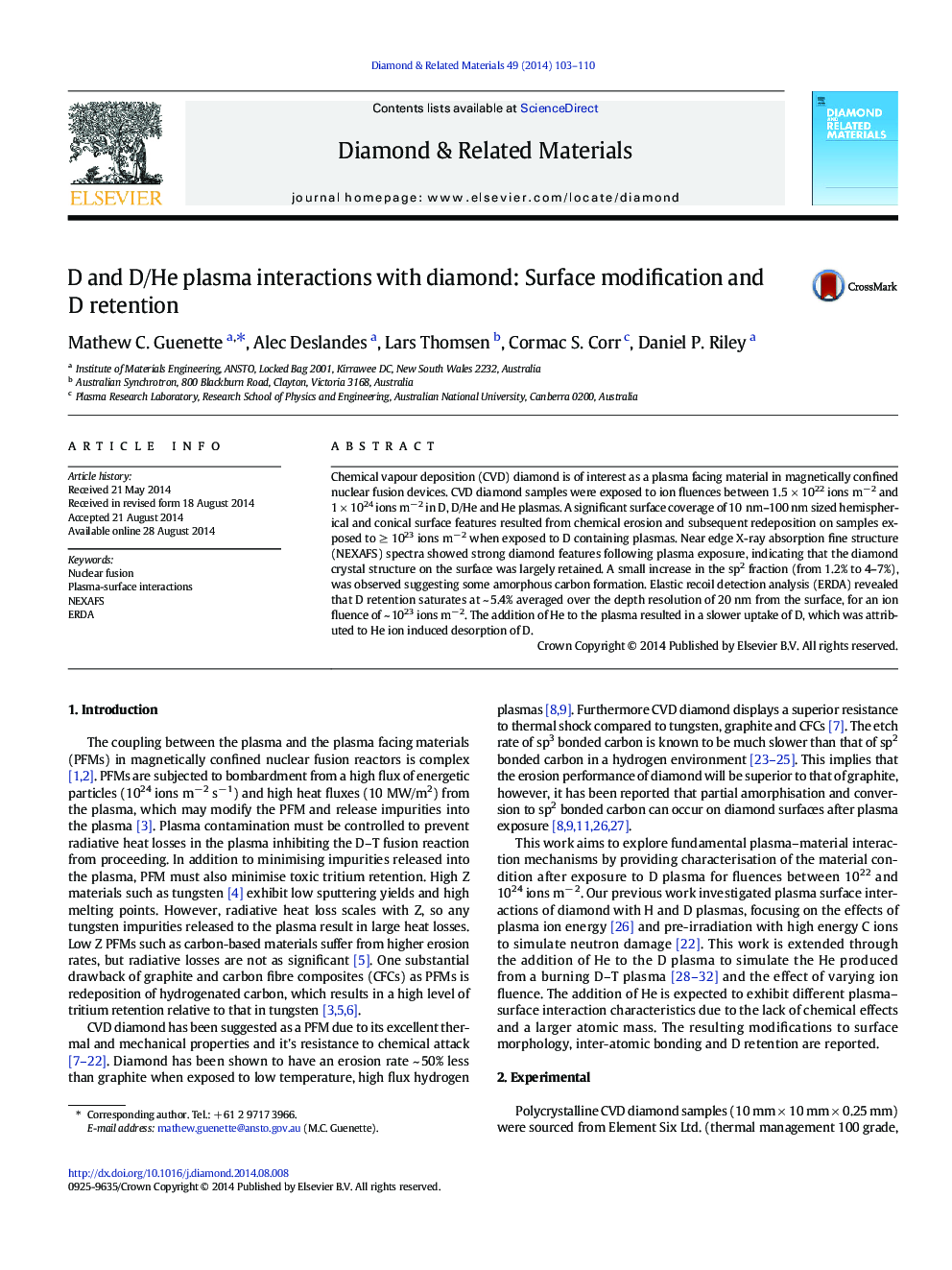| Article ID | Journal | Published Year | Pages | File Type |
|---|---|---|---|---|
| 702127 | Diamond and Related Materials | 2014 | 8 Pages |
•CVD diamond samples were exposed to a range of ion fluences in D, D/He and He plasmas.•Redeposited 10–100 nm surface features were observed after exposure to D plasma.•NEXAFS spectra retained strong diamond features following plasma exposure.•D retention saturates at ~ 5.4% averaged over the top 20 nm from the surface.•The addition of He to the plasma resulted in a slower uptake of D.
Chemical vapour deposition (CVD) diamond is of interest as a plasma facing material in magnetically confined nuclear fusion devices. CVD diamond samples were exposed to ion fluences between 1.5 × 1022 ions m− 2 and 1 × 1024 ions m− 2 in D, D/He and He plasmas. A significant surface coverage of 10 nm–100 nm sized hemispherical and conical surface features resulted from chemical erosion and subsequent redeposition on samples exposed to ≥ 1023 ions m− 2 when exposed to D containing plasmas. Near edge X-ray absorption fine structure (NEXAFS) spectra showed strong diamond features following plasma exposure, indicating that the diamond crystal structure on the surface was largely retained. A small increase in the sp2 fraction (from 1.2% to 4–7%), was observed suggesting some amorphous carbon formation. Elastic recoil detection analysis (ERDA) revealed that D retention saturates at ~ 5.4% averaged over the depth resolution of 20 nm from the surface, for an ion fluence of ~ 1023 ions m− 2. The addition of He to the plasma resulted in a slower uptake of D, which was attributed to He ion induced desorption of D.
